Master cylinder (Fig. 1) with sequential piston arrangement
A reservoir is fixed to the body of the master cylinder, in the filler neck of which a sensor for insufficient brake fluid level is installed.
The master cylinder is non-disassemblable and cannot be repaired.
Replacement is required if it fails.
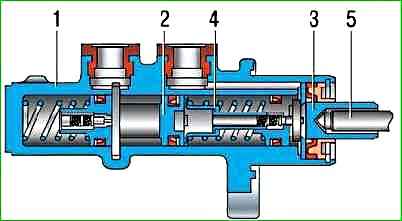
Removing and installing the brake master cylinder reservoir
The reservoir is removed for replacement or for preventive cleaning.
In addition, sometimes it is necessary to remove the reservoir to replace the rubber bushings that secure the reservoir.
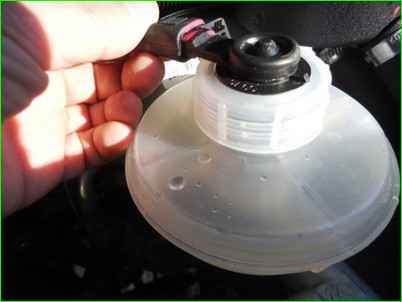
Disconnect the wiring block from the brake fluid level sensor
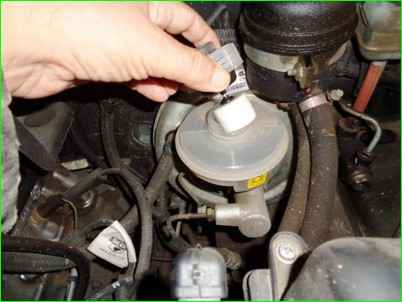
Unscrew the plug and take out the level sensor
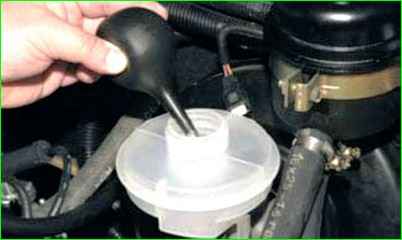
Use a bulb to pump out the brake fluid from the reservoir liquid
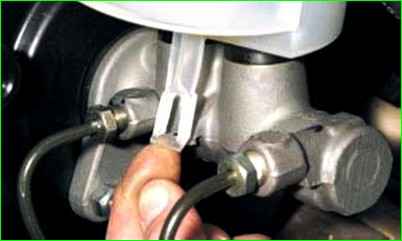
Pressing on the reservoir body from above, disconnect the plastic holders from the hooks on the cylinder
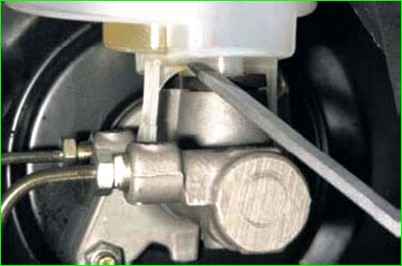
Pry the reservoir with a screwdriver
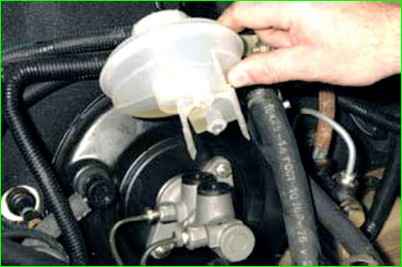
Removing the reservoir
Installing the reservoir in reverse order
Filling in brake fluid and bleeding the brake hydraulic drive, article - "Replacing brake fluid"
Replacing the brake master cylinder
Disconnect the wiring block from the low brake fluid level sensor and pump out the fluid from tank.
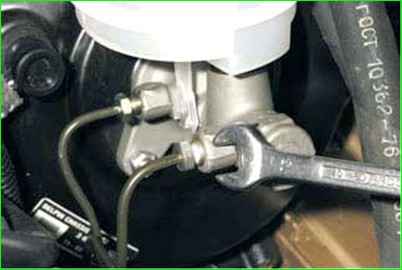
Using a 13 key, unscrew the fittings of the two brake pipes
Move the pipes away from the brake cylinder
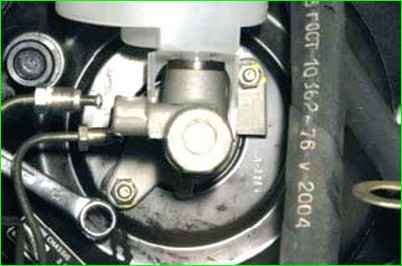
Using a 13 mm wrench, unscrew the two nuts securing the master brake cylinder to the vacuum booster housing
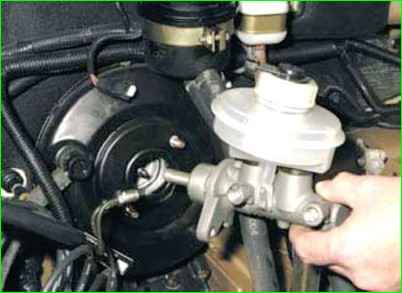
Remove the master brake cylinder together with the reservoir
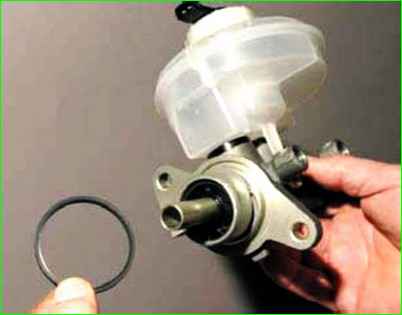
The connection of the cylinder with the vacuum booster is sealed with a rubber ring
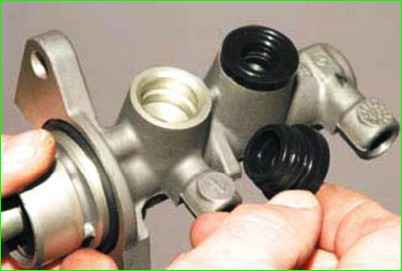
To replace the rubber connecting bushings, remove them from the brake cylinder housing
After installing the master brake cylinder, bleed the brake system.





